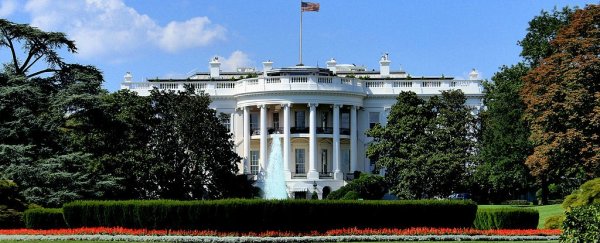The White House North Lawn has developed a sinkhole, which is now blocked off by two traffic cones and yellow tape.
On Tuesday, Steve Herman, a reporter from Voice of America, and Breitbart's Charlie Spiering tweeted images of the sunken turf.
Located outside the entrance to the press briefing room, the hole is "growing larger by the day," according to Herman.
This week I’ve been observing a sinkhole on the @WhiteHouse North Lawn, just outside the press briefing room, growing larger by the day. pic.twitter.com/BsFUtxFqpB
— Steve Herman (@W7VOA) May 22, 2018
Sinkhole appears in the White House lawn. Right behind @hogangidley45 office! pic.twitter.com/DRCLkNQBw7
— Charlie Spiering (@charliespiering) May 22, 2018
While a sinkhole on the White House lawn may seem unusual, sinkholes overall are fairly common.
In this same exact day in May 2017, Mar-a-Lago, the Florida estate where Trump often vacations, also coincidentally developed a four-foot by four-foot sinkhole.
Sinkholes form when rainwater seeps into a crack in the ground and pools in the sediment below. As more water builds up, it starts to carve out a hollow opening deep inside the earth. Meanwhile, soil on the ground level will stick together, keeping the surface superficially strong and in one piece.
Nothing appears to have changed at first, but once the underground void gets large enough, the surface can suddenly give way, causing the ground to collapse.
Given that Washington, DC got a lot of rain last week, the White House lawn sinkhole was likely caused by stormwater.
Sinkholes happen throughout the world but are more common in places where the ground is made of soft rocks like limestone, since rainwater can dissolve soft rock more easily and creating caverns.
According to the USGS, about 18 percent of the US sits on top of this kind of ground.
The White House's plans to fix the sinkhole are currently unclear. If it's not addressed soon, it will probably get larger.
This article was originally published by Business Insider.
More from Business Insider:
